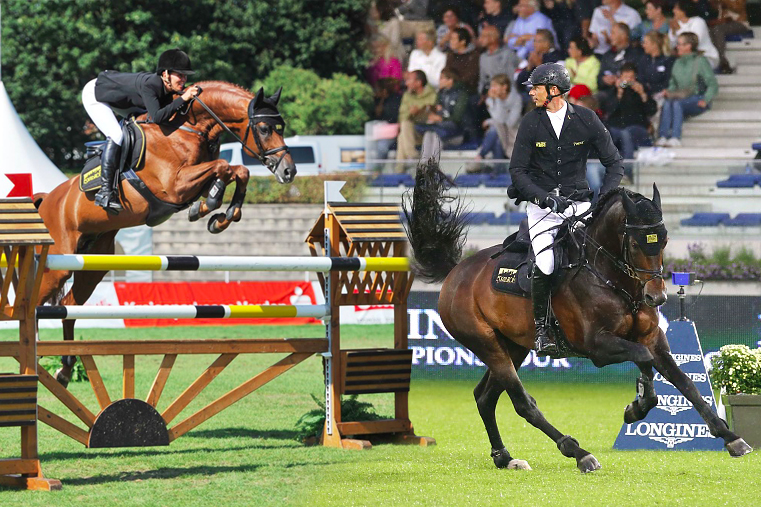
It’s Beautiful when it’s Simple
Story – Christopher Hector / Photos – Roslyn Neave and Kiki Beelitz
When you watch real horse people at work, you don’t need to be told what they are trying to achieve. If the horse is expected to understand what you are asking, then the questions should be clear to the observer. And so it was in the outdoor arena at Bitter & Kutscher Sportferde GmbH, on a balmy autumn day, as Marco and Eva demonstrated their daily schooling regime.
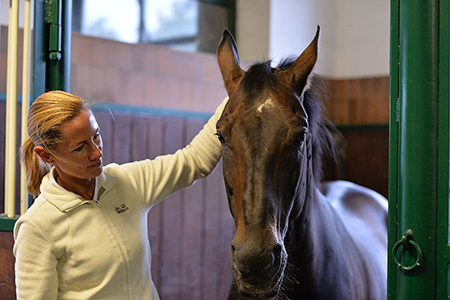
Eva introduces us to Stakkato
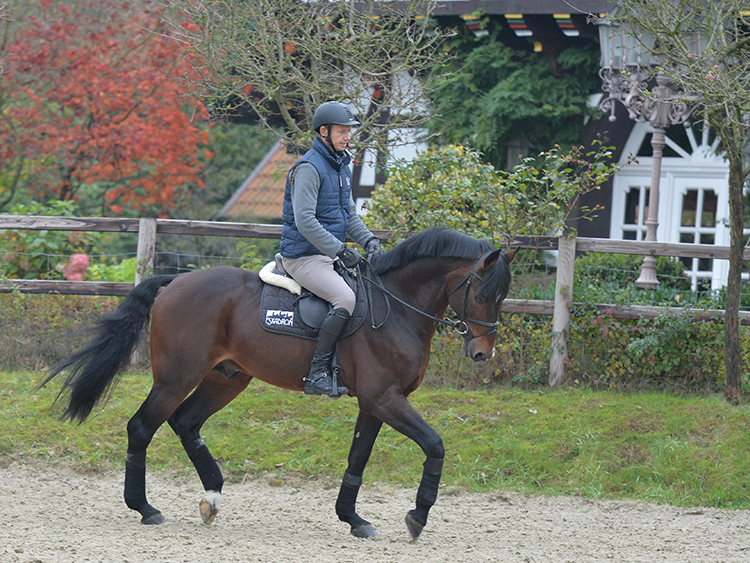
Marco and his star, Van Gogh
Eva is riding a seven-year-old, while Marco is cheating, he’s riding Van Gogh. You can see why it is no surprise that Van Gogh is the sire of Olympic dressage star, Sönke Rothenberger’s Cosmo, he really is a lovely mover, and Marco might just as easily been working him in for a Grand Prix dressage test, as for a preparation for the international five-star jumping circuit.
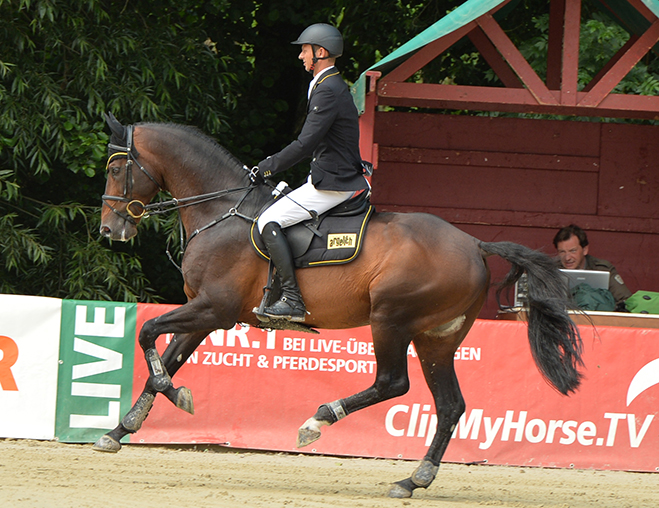
Marco and Van Gogh show us where Cosmo got his canter
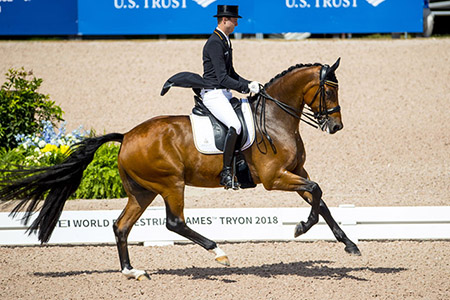
Cosmo showing off his dressage medal-winning canter with Sven Rothenberger
Eva on the other hand has chosen two genuine green horses and really has to work to show the training methods in action…
“With the seven-year-old, I really try to always have the same system. Try to let the horses really stretch long and low in the beginning, and after a few transitions, trot / canter / trot / canter, then I ride them more in the upright position so they get more weight on the hind legs and I can collect them a little bit. I like many transitions in trot and canter so you go forwards and backwards again, because this is what you need in the ring.”
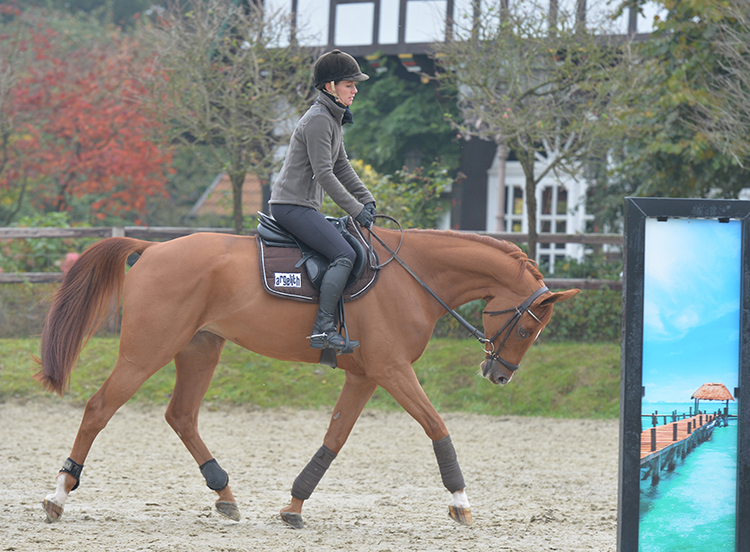
Eva and a seven-year-old Perigueux son
“I saw it first with Michael Klimke, this really stretching long and low. I had seen many riders make their horses very round, but it was always pulled in, but with Michael, he really let the neck in front the wither go long and low, really stretching forward.”
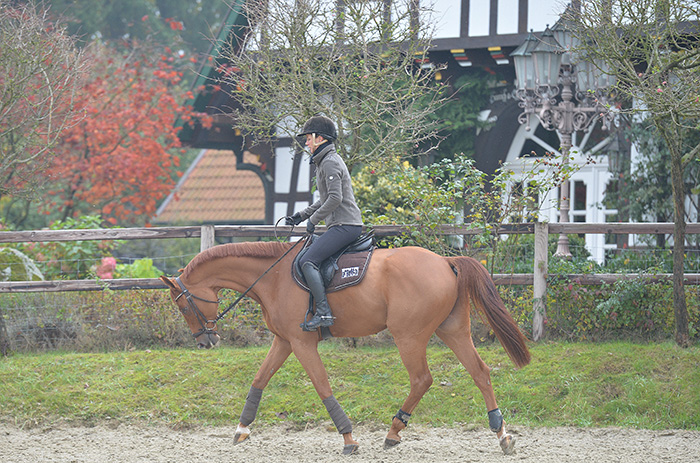
“I think the horses like it. They all do it. Sometimes when they don’t know how to do it, it is a little difficult, it takes time – if they are tense, it sometimes takes twenty minutes. But when you have them in this position, but I have never had a horse that gives me the feeling they don’t like it. They all enjoy to go like this.
For sure, with the mare today, she sees gardeners or someone walks past and everything, so goes up, but you saw at the end she was pulling the reins down, they enjoy it.”
more on cavalettis follows
You like to have the cavalettis quite close to each other…
“Yes, it is something we learnt from Manni Kötter, our trainer – they are on a circle, and on the inside it is two metres from one to the next, and on the outside, it is three metres. This work is even more difficult in trot, where the horses do one whole step in between, they put the legs down two times, it’s much more complicated for the horses than the work in canter. It’s good to work with Manni, again it is really the situation that I don’t always understand what he wants, but I feel in the end, that it is better.”
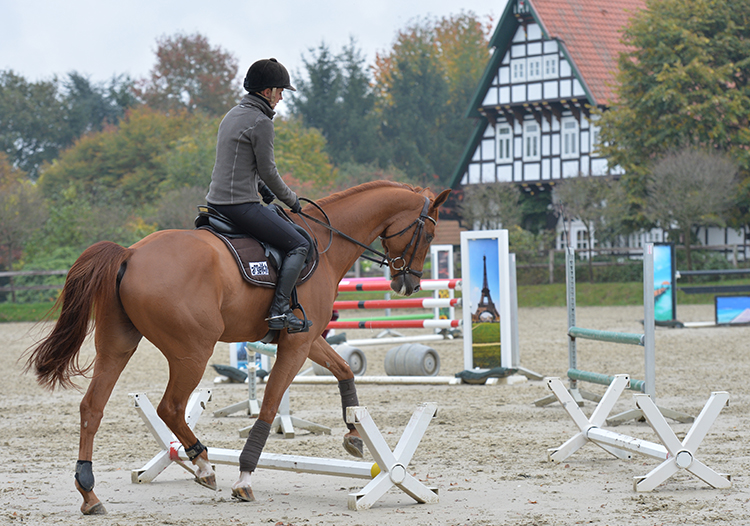
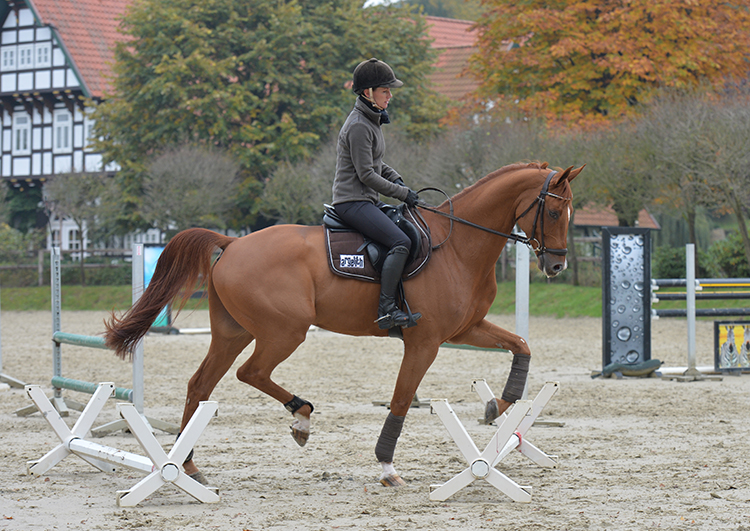
“What is important with the canter work is that the horses don’t make it a bounce, where they push with both their legs at the same time, they should still keep the canter rhythm. If they go with both legs at the same time, they are still tense and this is not what you want, they should canter.”
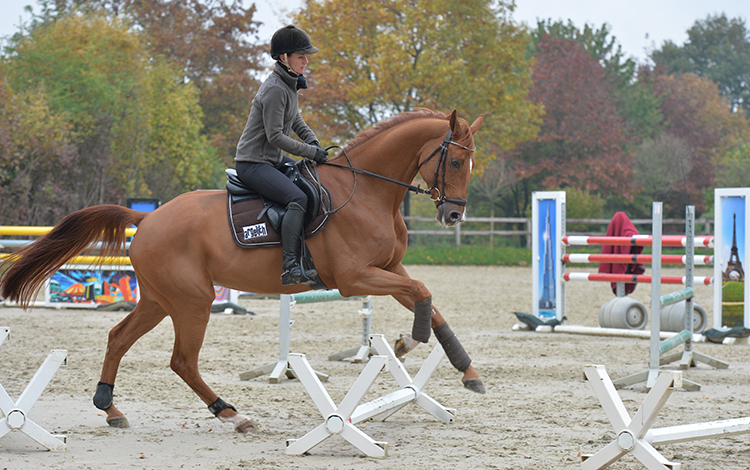
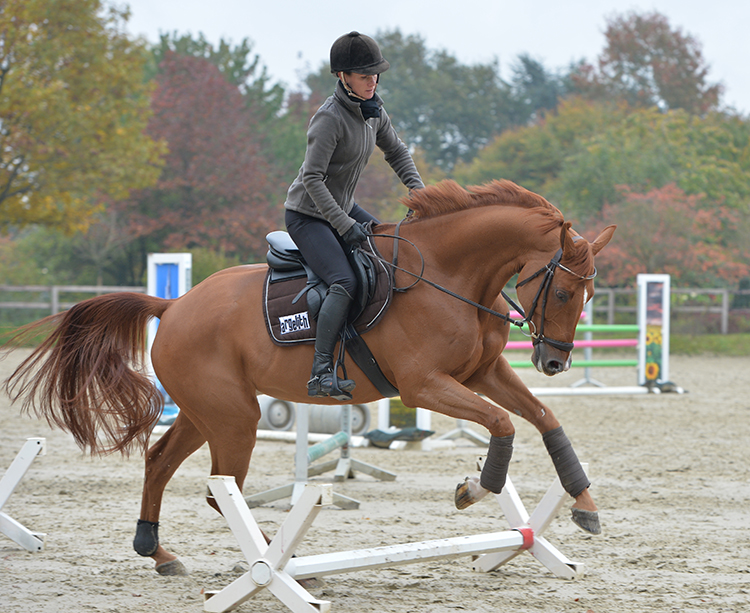
“We also try and do it more collected and in an upright position, so that the horses learn to stay in self carriage, but you give the reins and they go back to this long and low position.”
And the verticals?
“The in-and-out you mean? You saw with the chestnut when he touched it once, the reaction was unbelievable… sometimes with the young horses they are a little bit scared, they have to learn how to jump when there are more poles after each other, like a little combination. They have to be brave, they have to concentrate, they have to be quick. It’s good for everything, they use the body, they have to put the back up – it just makes them supple.”
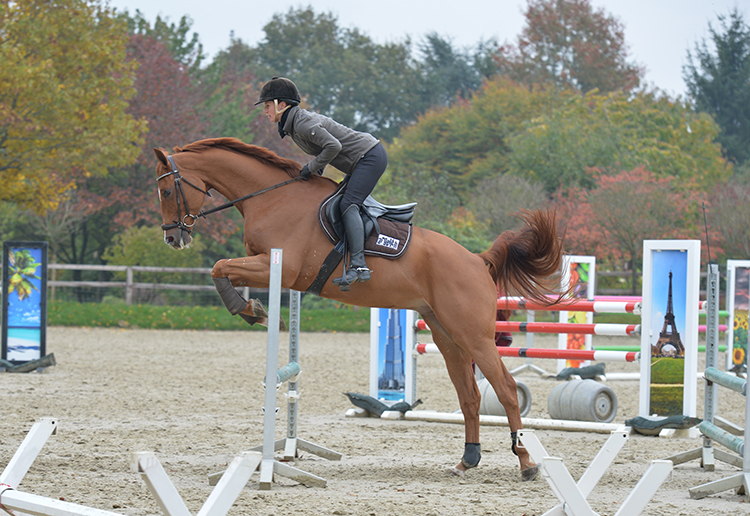
“When you collect them a little more, sometimes it is more difficult for them to jump well behind, they have to get their hind legs up, then they really have to use their whole body. It makes them stronger. For example, this mare is still so weak, she cannot really take the weight on her hind legs. With her, I do this two or maybe even three times a week, not a hundred times, but five to ten times I jump the in-and-out and you feel her getting stronger from it.”
Counter canter seems important in your warm up?
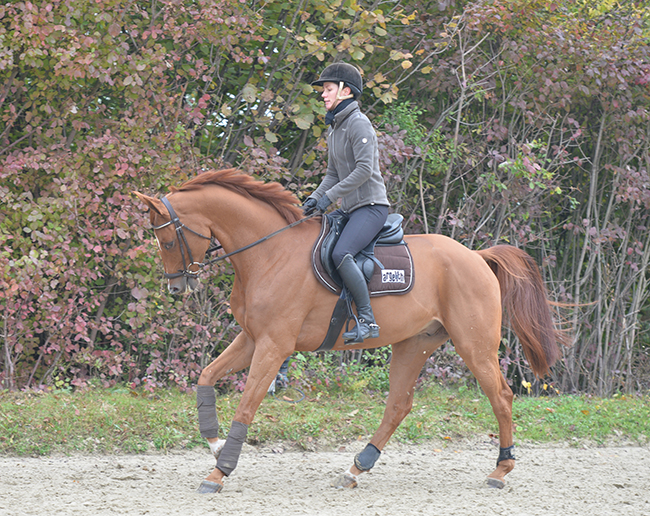
“I really like this exercise to get the horse really straight, when you do a counter canter and then you bend them to the inside. For me it is the easiest way to see if the horse really accepts my seat and my weight.
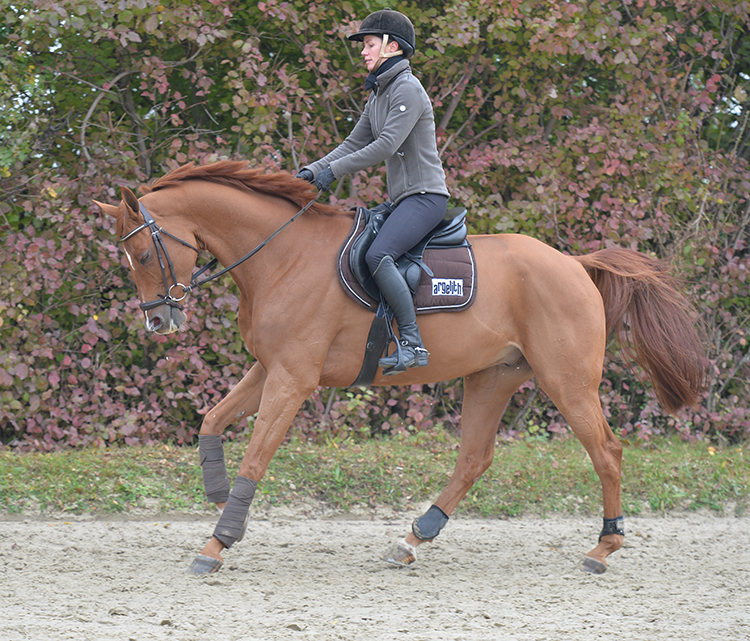
This is what the chestnut didn’t do in the beginning, he was really tense and it felt as if it was a little bit painful for him, but when you do it often, and they stretch, then you can feel that you can use your body and they react to this, and you don’t need the reins so much. It’s good when you get there and it works well, but the way to get there is never perfect, and it never looks perfect.”
“This is what people forget, they always want these perfect pictures, but sometimes it is only a little moment when it is perfect, especially with young horses.”
It’s important not to get upset when the young horses make a mistake…
“Absolutely. I mean if I got upset today, it would be a big crisis and the horse wouldn’t learn anything. You just have to do it again, and again, and again. Okay sometimes when you feel they really don’t want to, or they are not concentrating, or only working against you – then you don’t get upset, but you have to show the horse: concentrate now. The horse today, he wanted to do it well, but from his body, he couldn’t let it through, so I just do it again and again and again. You have to stay calm.”
Marco interjects: “That doesn’t work all the time. It depends sometimes on the mood of the rider, but it is absolutely correct that you should stay calm.”
Eva: “It’s true sometimes you get upset, but it is always wrong. To stay calm and do it again, is always the better way, but we are not perfect.”
Perigueux is available for the 2021 season from International Horse Breeders in Australia. Find out more about this talented, and beautiful stallion: https://ihb.com.au/product/perigueux/
What are the qualities Perigueux is giving to his progeny?
“They are so careful, they are so quick. The chestnut we saw today, he also has this quality. Also they want to do good, they always want to work with you. They are interested not phlegmatic.
more follows
“Sometimes you have horses with all the scope, and all the quality, but somehow they don’t work with the rider, they are always against, and then it is not possible to make a good horse.”
Is it possible to get more scope?
“Yes, to get the stride bigger, to give the horse self-confidence so they trust themselves – absolutely you can work on this. For example, with the horse that doesn’t have the biggest stride, you always come too close to the fence, and that doesn’t make it better. You should always give them space to jump, and come to the fence with a bigger stride, and this absolutely helps them. Sure, it’s not so good if you crash them into the fence, or if you jump too big fences with them too early, you have to listen to the horse and learn what you can ask. But if you always work in small steps, then you can improve the scope.”
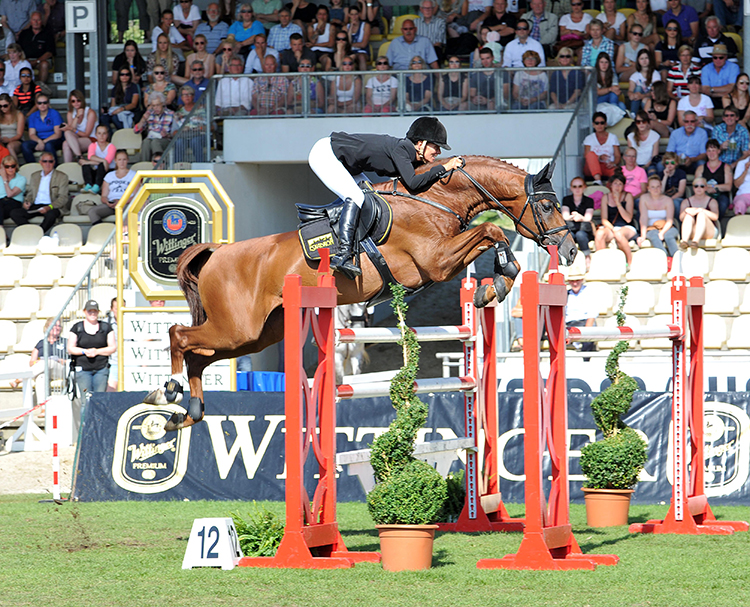
Eva and Perigueux competing
“The brown horse is six years old, by Satisfaction out of a Sao Paulo mare. I don’t know so much about breeding, but people say, SatisfactIon / Sao Paulo, that does not sound easy, they are often against the rider.
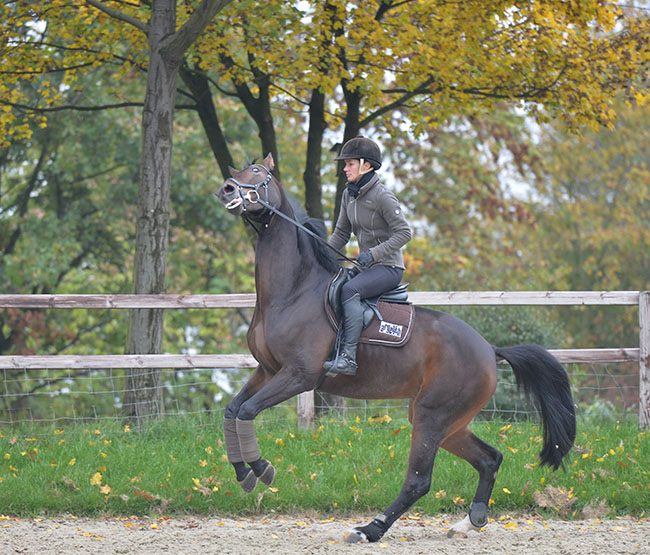
But to be against the rider, there are two different ways, she is absolutely against the dressage work, and behaving and listening, but when you go to a training show with her, and you ask her to jump a course, she wants to do everything. She’s brave, it doesn’t matter if it is blue or white, or if there is water under the fence, she does it. It gives me the feeling that it makes sense to work with this horse.”
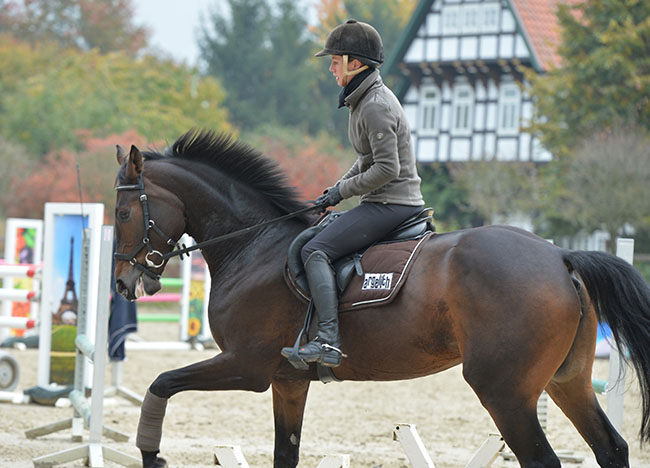
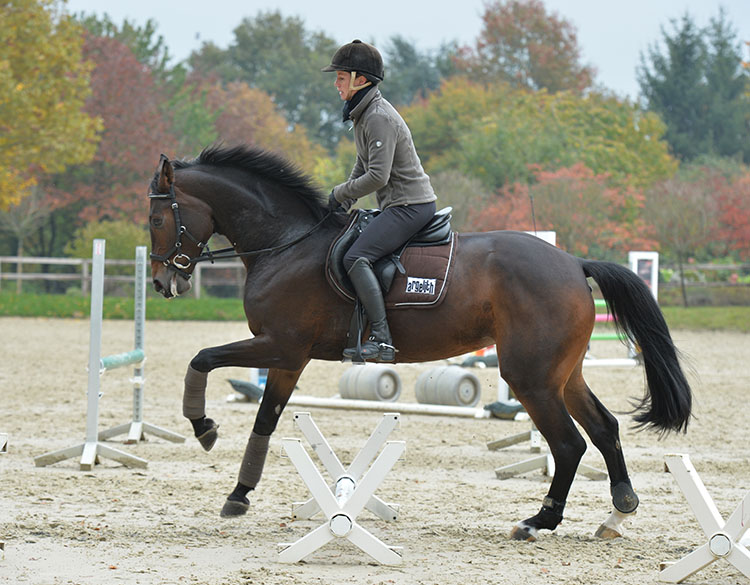
Time to swap place and point the microphone in Marco’s direction, and the burning question is how both he and Van Gogh are recovering from that awful crash…
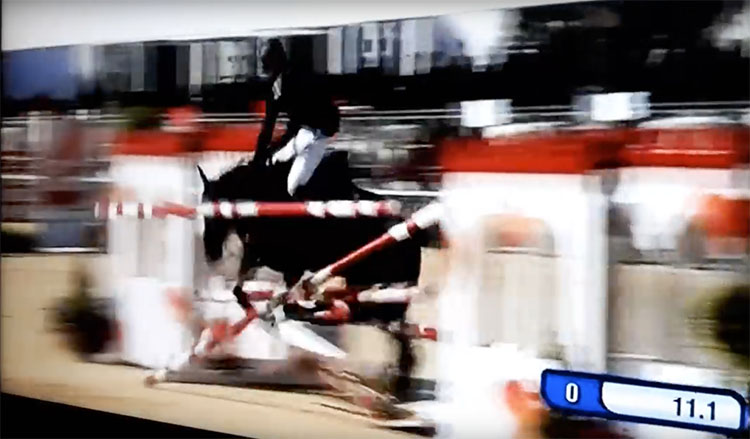
The big crash you had with the stallion, did you recover quicker than the horse?
“Difficult to say. I am in therapy with my back, because I still have problems. I was fine, like two or three weeks after the crash, I just stopped for one week going to shows. Perhaps in the end I should have spent a few weeks at home, but in a situation like this you think you have to go on as quick as possible. A week after the crash I went to Cannes, but it was a disaster. I was very stiff, and the horses had not been really prepared, it didn’t work out. Okay I had two jump offs in the team class which is one of the reasons I went – but for sure, it would have been possible to find somebody else from the team who could have ridden.”
“I should have stayed home longer and got everything right again.”
What went wrong, do you know what happened?
“In that moment? I don’t remember. I remember the turn, he was quite hectic in that jump off. In the first round, he was clear. There were only six clears, it was a tough class, but he was on fire, a little bit like eating the fences. I was one of the last to go, and I knew I had a chance to win. I remember the turn, and then he took off too early, from what I remember there was another stride… People say there was a shadow, but okay, he is an old horse, I don’t believe in this shadow thing, I think he was just so hectic and he really wanted to go, that he maybe lost a little bit his mind. That’s my feeling.”
Has he recovered now?
“He is okay. For sure he had a shock as well, for me it was also a shock because I’d never had a fall like this. We were both really lucky that we had no serious damage. He was fine, we checked him everywhere, he just got bruises – like me.”
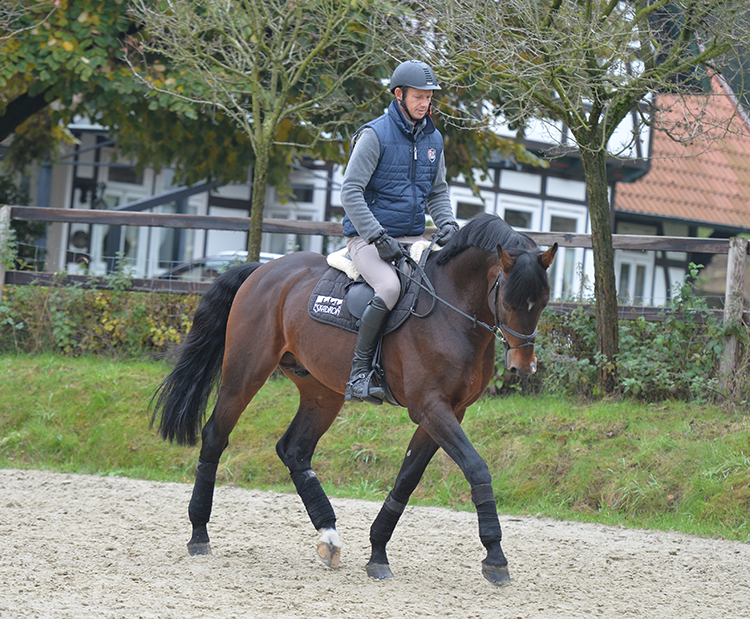
In his mind, did he lose confidence?
“I rode him for the first time after it, in Rotterdam in a 1.40m class, and I thought, okay I will never again jump a Grand Prix with this horse. He was not back to himself, he was super careful, jumping way too careful, and in the doubles I had real problems – but then I jumped him a few more times and he was more or less back to normal. It took a while.”
“He was placed in the Grand Prix in Aachen, he jumped well there for the whole week. For sure it was a shock for both of us, and we needed a few weeks to get away from it.”
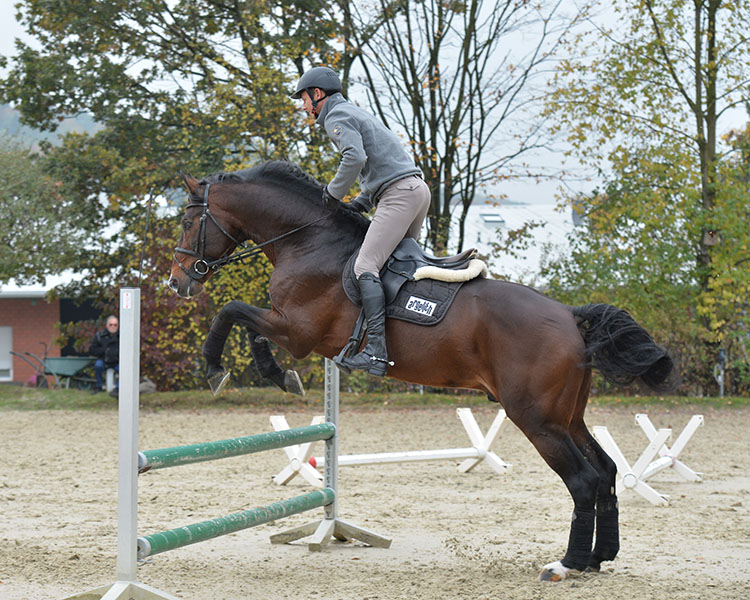
How did you get his confidence back, did you work him differently at home?
“No, I just jumped him now and then over small courses… I think if this happens just once, it is no problem but if it happens a few times, then for sure, you have a big problem. This horse is used to being at shows and nothing happens to him, and if it happens once, the same as me, I was shocked and the next time you go into the ring, okay you are not a machine, but you get it quick out of your head and I think it is the same with the horses. If they are used to having good experiences in the ring, they don’t expect anything bad to happen. For sure, it took two classes but then he was back to normal.”
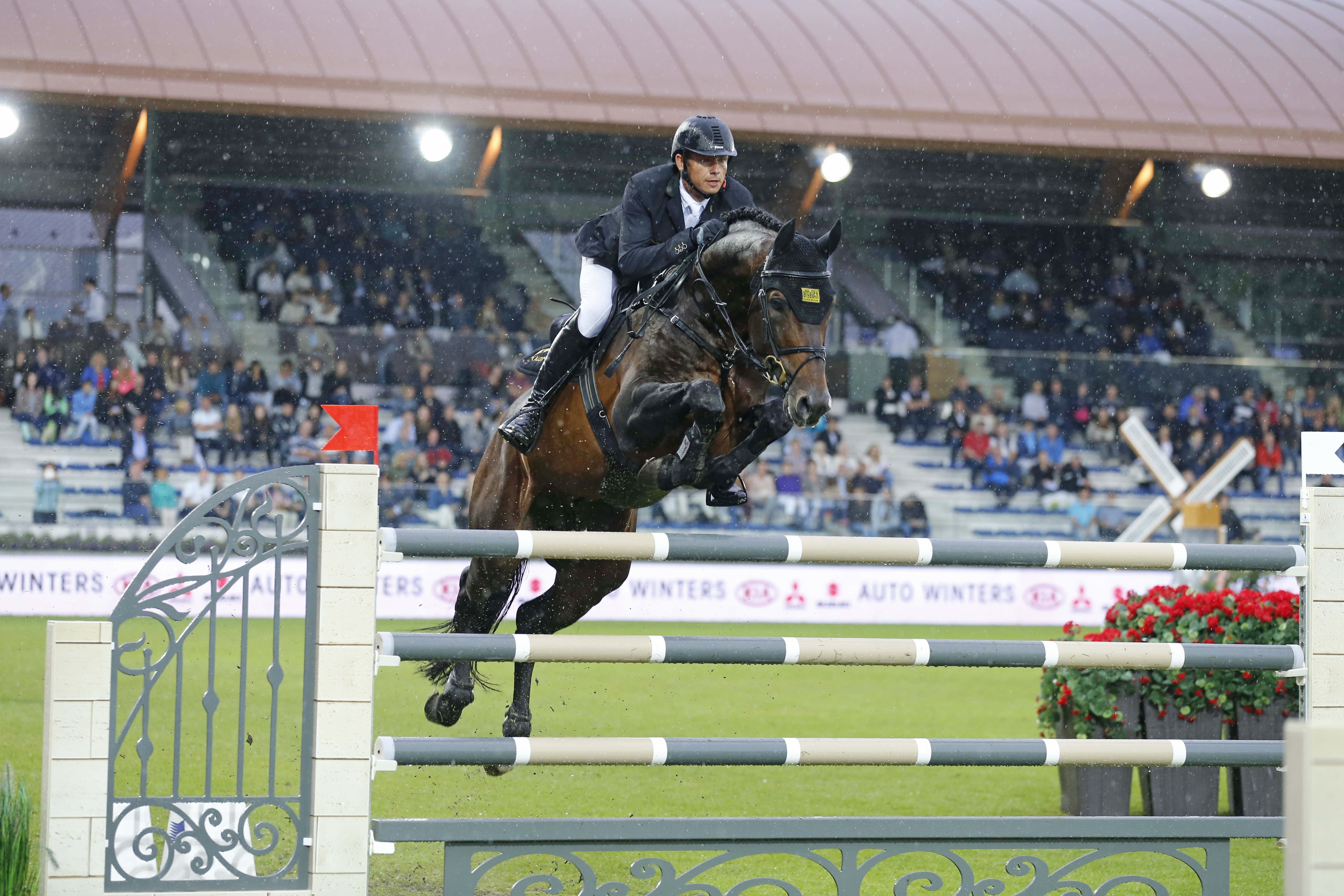
Marco and Van Gogh
The work you were doing in the outdoor arena with him, is it always the same?
“We have more or less the same system, especially with Van Gogh, he is a super nice, well trained horse – that’s not my work, I got the horse like this. Also his body, the way he is, he has a lot of talent for having a nice trot, a super nice canter, the way he is made, makes it easy for him. If all the horses were like him, I would have a very nice life.”
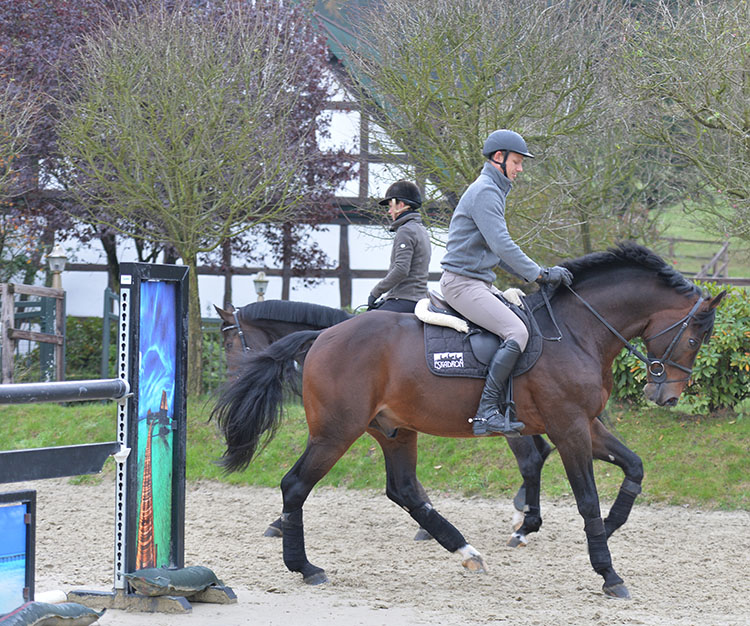
“But I do have to say, there is a big difference riding him for the flatwork, and riding him in the ring. In the ring he is different, sometimes he is not listening to me, but in the flatwork, he is a dream. What you saw today is what I do a lot of the time. The in and out is something I really like, it is good gymnastic work – you don’t have to do it every day, two, three, four times a week. Even when the horse is having a break like he is, he can do this exercise, and it makes the horse quicker, it’s good too to put some weight on the hindlegs.”
“Maybe you noticed, one time he hit a pole, I don’t think he was concentrating, this is how you educate them to listen to the poles. But you can put in all the work, in the end, it only works with a good horse, but this work is for every rider, dressage and eventing as well. Now there are so many good riders and good horses, it only works when you can ride a quality horse – the quality horse you can improve, but it must have the talent to start with.”
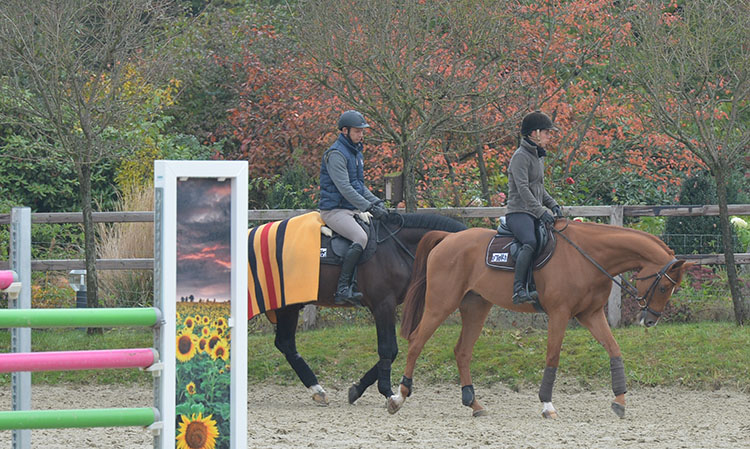
Looking for jumping blood for 2021? Find our more, go to www.ihb.com.au
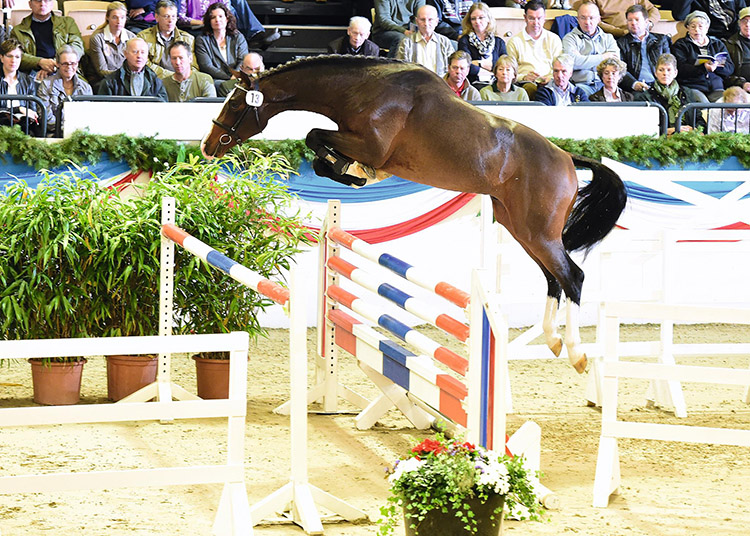




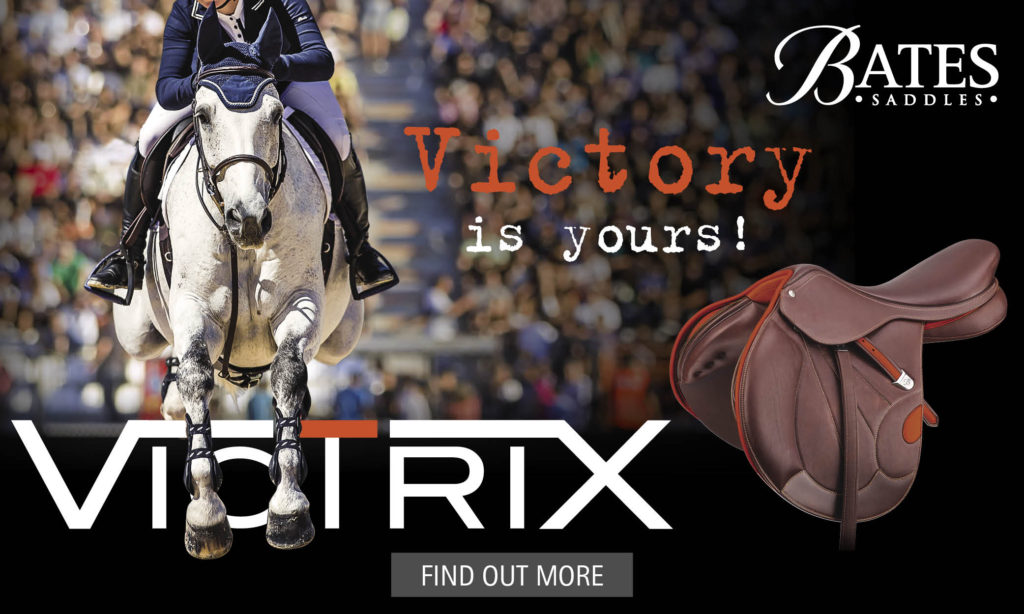

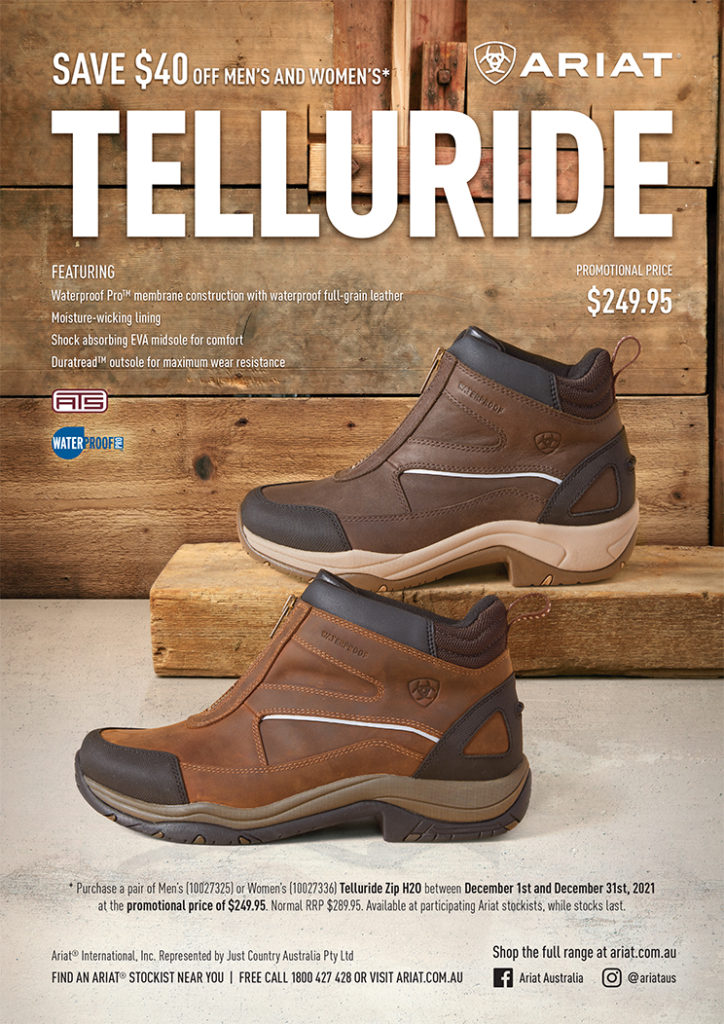


Congratulations.I hope to see them riding in the ring again !!